AUTOMATION SERVICES
Automation services involve the use of technology to perform tasks with minimal human intervention, improving efficiency, accuracy, and consistency across various processes. These services can encompass a wide range of applications, from software development and testing to IT operations and business processes.
At Alpheratz, we are qualified to support in the following areas:
Types of Automation
Test Automation
- Automated Testing Frameworks: Utilizing tools and frameworks (e.g., Selenium, JUnit, TestNG) to automate the testing of software applications.
- Script Development: Writing scripts to run test cases automatically, allowing for faster regression testing and improved test coverage.
Continuous Integration and Continuous Deployment (CI/CD)
- Pipeline Automation: Setting up CI/CD pipelines to automate the build, testing, and deployment processes of applications.
- Version Control Integration: Using tools like Git to trigger automated builds and tests whenever code changes are made.
IT Process Automation (ITPA)
- Workflow Automation: Streamlining IT processes, such as incident management, change management, and service request fulfilment.
- Scripting and Tools: Implementing scripts and tools (e.g., Ansible, Puppet, Chef) to automate server provisioning, configuration management, and deployment.
Business Process Automation (BPA)
- Task Automation: Automating repetitive business tasks such as data entry, invoice processing, and reporting.
- Robotic Process Automation (RPA): Utilizing RPA tools (e.g., UiPath, Blue Prism, Automation Anywhere) to automate rule-based processes across applications.
Implementation Process
Assessment and Planning
- Identifying Opportunities: Analysing business processes to identify tasks suitable for automation based on frequency, complexity, and impact.
- Requirements Gathering: Defining automation goals, scope, and expected outcomes.
Tool Selection
- Choosing Automation Tools: Selecting appropriate tools and technologies that align with the organization’s needs and existing infrastructure.
- Vendor Evaluation: Assessing different vendors and solutions to find the best fit for automation projects.
Development and Configuration
- Script Development: Writing automation scripts or configuring automation tools to perform specific tasks.
- Integrating with Existing Systems: Ensuring that automated processes can interact seamlessly with existing applications and systems.
Testing and Validation
- Quality Assurance: Testing automated processes to ensure they function as intended and deliver the expected outcomes.
- Error Handling: Implementing mechanisms to manage exceptions and errors that may arise during automation.
Deployment and Monitoring
- Rollout: Deploying automation solutions into the production environment, ensuring minimal disruption to business operations.
- Monitoring and Maintenance: Continuously monitoring automated processes for performance and reliability, adjusting as necessary.
Tools and Technologies
- Testing Tools: Utilizing various testing tools for test management (Jira, TestRail), automation (Selenium, Cypress), performance (JMeter, LoadRunner), and security (OWASP ZAP).
- Version Control Systems: Using tools like Git to manage test scripts and collaborate effectively with development teams.
Benefits of Automation Services
- Increased Efficiency: Reducing the time and effort required for repetitive tasks, allowing employees to focus on higher-value activities.
- Enhanced Accuracy: Minimizing human errors in data entry and processing tasks, leading to more reliable outcomes.
- Cost Savings: Reducing operational costs by streamlining processes and increasing productivity.
- Scalability: Enabling organizations to scale operations quickly without a corresponding increase in workload.
Challenges of Automation
- Change Management: Managing the transition to automated processes and addressing resistance from employees.
- Skill Gaps: Ensuring that staff are adequately trained to work with automation tools and technologies.
- Maintenance and Updates: Keeping automation scripts and tools updated to adapt to changes in business processes or software environments.
